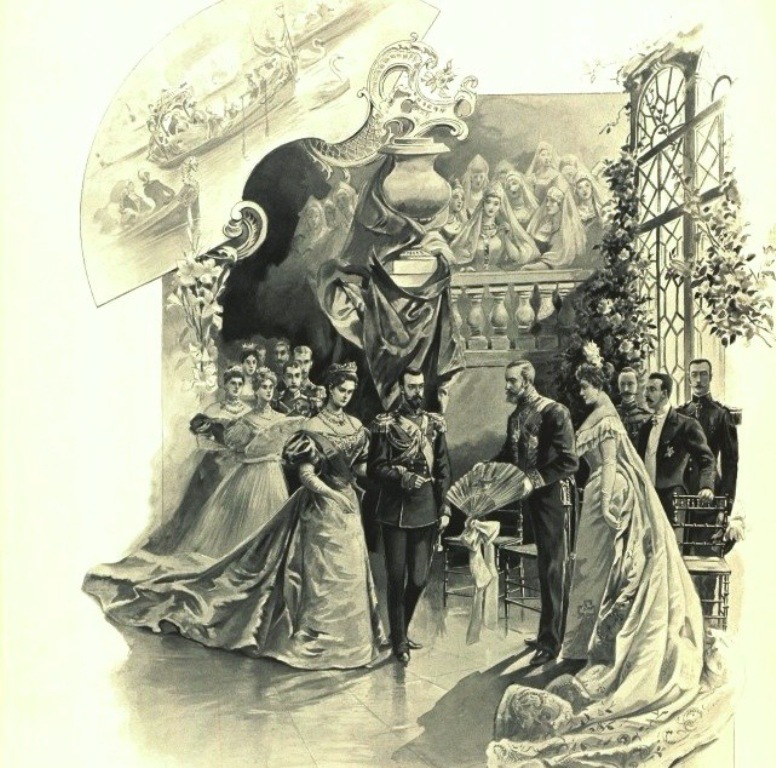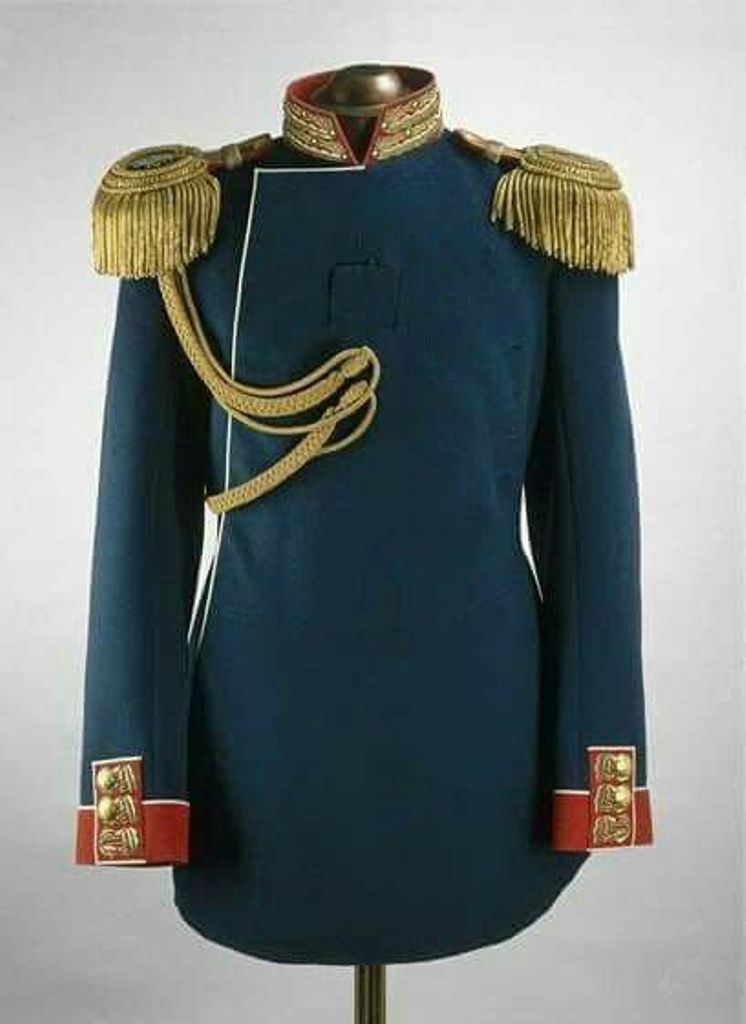
More than a century after his death and martyrdom, a number of tragic events continue to haunt the legacy of Russia’s last tsar. It was the Khodynka tragedy, in which thousands were killed or injured during a stampede, that would haunt Nicholas II throughout his 22-year reign.
On the morning of 31st May [O.S. 18th May] 1896, over half a million revelers had gathered on the Khodynka Field in Moscow for ceremonies marking the Coronation of Emperor Nicholas II.
Organizers had set up 150 stalls to distribute 400 thousand free gifts to the people, a souvenir of the historic event.
The gift included a commemorative enamelled metal cup, bearing the cyphers of Nicholas II and Alexandra Feodorovna 1896 and the Imperial Crown on one side, the Imperial coat of arms on the reverse.
The cup was distributed along with a variety of food presents, which included a 400 gram loaf of bread; 200 gram sausage stick; Vyazemsky gingerbread; a small bag full of sweets, nuts, and dried fruits.
Everything was tied in a bright calico commemorative scarf, on which the portraits of the imperial couple were printed on one side, and a view of the Kremlin on the reverse.
Sadly, the day began in tragedy. Rumours began to spread among the people that there was not enough beer or pretzels for everybody, and that the enamel cups contained a gold coin. A police force of 1,800 men failed to maintain civil order, and a catastrophic crowd crush and panic resulted in an estimated 1,389 people being trampled to death, and an additional 1300 injured, in what has become known as the Khodynka Tragedy.
Despite the tragedy, the program of festivities continued as planned elsewhere on the Khodynka field, with many people unaware of the tragedy that had taken place. The Emperor and Empress made a brief appearance in front of the crowds on the balcony of the Tsar’s Pavilion in the middle of the field around 2 p.m. By that time the traces of the incident had been cleaned up. The couple were clearly shaken by the news.

The Emperor and Empress on the balcony of the Tsar’s Pavilion in the middle of the Khodynka Field
It was the Emperor’s attendance at a grand ball held on the evening of the tragedy, however, which planted a seed of gross misunderstanding and ridicule, one which Nicholas is criticized to this very day. I would like to take a closer look at this . . .
The ball was hosted by the French ambassador Gustave Lannes de Montebello (1838-1907), in Moscow. The French spared no expense in the extravagant preparations for the ball. The ball in part marked the recently signed Franco-Russian alliance.
For the arrival of Their Majesties, foreign princes, princesses, members of the Imperial Family, representatives of the foreign diplomatic corps, court officials gathered in the halls of the embassy. For hours this mass paraded through the halls. The excitement was everywhere. Their Majesties were greeted by the French ambassador and his wife at the entrance and remained at the embassy until 2 am.
The tsars’ sister Grand Duchess Olga Alexandra wrote: “The French government had gone to immense expense and trouble to arrange the ball. Tapestries and plate were brought from Versailles and Fontainebleau and 100,000 roses from the south of France.
“Other guests shared their descriptions: “some of the rooms had been converted into winter gardens” . . . “in one room a fountain lit up with colourful electric lights”.
The grand ball at the French ambassador’s party ended with a fine dinner. During the ball, the ladies were offered luxurious fans and bouquets of flowers brought from France. In general, the ball was wonderful; full of animation, luxury, extraordinary brilliance, it left an indelible impression on many.
During the ball, an orchestra played and a choir of Russian singers in luxurious Russian costumes sang. The wide hospitality of the French embassy was extended to all guests.
An open buffet, champagne, fine French wines, a magnificent dinner, flowers for guests – everything was there. The tables in the Tsar’s rooms especially stood out – among the luxurious silver there were literally mountains of fragrant flowers.

Nicholas and Alexandra are greeted by the French ambassador and his wife
It was clear that the newly crowned Emperor and Empress did not want to attend the ball. Some historians believe that Nicholas was bullied by his uncles, urging him to attend. Because of the extravagant preparation for the ball, caused in part by France’s delight at the recently signed alliance with Russia, the failure of Nicholas and Alexandra to attend would have been a great slight.
According to the Countess Maria Eduardovna Kleinmichel (1846-1931), “in view of the terrible expense, the French ambassador begged the Imperial couple to attend, He urged the Emperor to agree to at least attending the reception, even if for a short while. The Tsar looked all haggard and pale as a white sheet. The Imperial couple walked in silence through the halls, bowing to those who had assembled. Then they went into the ambassador’s drawing-room, and shortly thereafter departed. The French were in despair, but they seem to have realized that their demands after such a tragedy, one which shook the Emperor and Empresses so deeply, were simply impossible.”
Grand Duchess Olga Alexandra also noted: “I know for a fact that neither of them wanted to go. It was done under great pressure from his advisers . . . Nicky’s ministers insisted that he must go as a gesture of friendship to France.”
Count Sergei Witte, who served as Prime Minister under Nicholas II recalled that Nicholas “looked sick” and was “obviously depressed”.
“I know that both Nicky and Alicky spent the whole of that day in visiting one hospital after another,” wrote Grand Duchess Olga Alexandrovna.
Nicholas allotted some 90 thousand rubles to the victims families out of his own personal funds, and not the states. He ordered that a thousand bottles of port and Madeira were to be sent to hospitals for the wounded, and the sovereign himself visited the wounded in the hospitals and attended the funeral service for the dead. Further, all orphans received a pension until they were of age.
In their book A Life for the Tsar, co-authors Greg King and Janet Ashton wrote: “They [Nicholas and Alexandra} visited the wounded in Moscow’s hospitals, and Nicholas announced that he would compensate the victims . . . yet the visits were mechanical and the pledge of financial aid went largely unfulfilled.” What is interesting to note is that their 189-page book, contains no less than 1,349 citations, yet there is no citation for their claim that Nicholas reneged on his promise to compensate victims. This in itself suggests that such a claim is based on rumour and not fact.
The Emperor’s kindness and empathy towards the victims and their families has been widely documented by numerous historians, both Western and Russian. The claim by King and Ashton that the “pledge of financial aid went largely unfulfilled”, simply goes against the personal character and deeply pious Orthodox beliefs of Nicholas II.
When asked if Nicholas II showed indifference to the victims of the Khodynka tragedy, Professor M.V. Lomonosov, who serves as associate professor of the history faculty of Moscow State University said:
“Here it is necessary to clearly separate the two matters. On one hand we have a situation related to human relationships, issues of empathy, compassion and mercy. On the other hand, there are issues of diplomacy and diplomatic protocol. And in this situation, they overlap one another.
“There was an official reception with the French ambassador, and it was necessary to demonstrate good relations with France. It was quite obvious that if Nicholas II for any reason ignored this event, then it would have a negative impact on Russian-French relations. As you know, his attendance at the ball was purely official.
“The reception was not an entertainment event as such. It was political. There are things which need to be done, despite the fact that a tragic event overshadowed it.
“By attending, Nicholas II fulfilled his duties and Russia received a certain European political resonance.”

Emperor Nicholas II at the bedside of a victim injured during the Khodynka tragedy
That evening Nicholas briefly noted the event in his diary: “Up until now, thank God, everything went perfectly. The crowd spending the night on the Khodynka meadow, in anticipation in the distribution of the food and mugs, broke through the barrier and there was a terrible crush, during which it is terrible to say about 1300 people trampled!!”
His lack of emotion or empathy in this entry for the victims does not reflect his private feelings. His detractors often cite this in their negative assessment of his reign. [for more on Nicholas II’s diaries, please refer to my article Nicholas II’s Diaries 1894-1918.]
Whatever the Emperor’s private feelings, the Khodynka tragedy created a number of negative images and impressions which would colour all later views of Nicholas, his government and his reign. The first such image was that of a young monarch dancing at a fabulous ball on the evening of a day when hundreds of his subjects had lost their lives as a result of the incompetence of his own government.
“The image was unfair,” notes Russian historian Dominic Lieven. Not for the last time, however, the Emperor’s self-control exposed him in temperamental Russian eyes to accusations of heartlessness and indifference.
Sadly, Nicholas and his government never erased the image which Khodynka implanted in the public mind.
***
Dear Reader: I am always pleased to present new articles based on my own research from Russian archival sources, and first English translations of new articles from Russian media sources on my Nicholas II blog and Facebook pages. It is these articles and topics which seldom (if ever) attract the attention of the Western media. I personally translate the articles, and complement them further with additional materials, photographs, videos and links.
If you found this article interesting, then please help support my research by making a donation in US dollars to my project The Truth About Nicholas II – please note that donations can be made by GoFundMe, PayPal, credit card, personal check or money order. Thank you for your consideration – PG
© Paul Gilbert. 23 August 2020








































You must be logged in to post a comment.